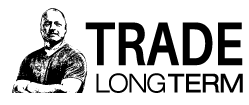Suppressing the Inner Voice of Doubt when Investing

Published August 17th, 2021
It’s normal to have doubts when things don’t go your way, especially when investing your money. So how do you suppress the inner voice of doubt when it comes to investing.
Any activity that you have an emotional connection with is one where doubts will flare up and test your resolve.
Losing weight. Starting a family. Taking an overseas posting. Driving your business forward. And investing.
Investing tends to be an emotional roller-coaster because it involves money, which many place a high value on, and is also played on a field that is constantly changing and sometimes defies logic.
So here’s three tips to help quieten your inner voice and retain confidence when things go a little pear shaped…
Know the WHY?
You need to know WHY your strategy makes money. If you’re unable to explain it in a single paragraph then chances are you’re not really understanding it either. And if you don’t understand HOW and WHY then chances are when the markets get tough you’ll be more likely to second-guess or stop trading completely.
For example, the Premium Portfolio profits from trends. That profit accumulates because winning trades are kept, so they can continue to grow, yet losing trades are exited quickly to limit losses. This creates a mathematical positive expectancy. Trends must occur over time. They simply can’t not occur. So the Premium Portfolio will lose money if there is a sharp reversal of trend (like we saw in October) or chops sideways for a prolonged period of time.
In other words I can explain WHY the Premium Portfolio lost money during October. And because sharp reversals do occur in financial markets at times, then I have no reason to believe there is a problem with the strategy.
Rely on EVIDENCE
I use five different strategies to manage my assets, including my retirement funds. Every strategy, including the Premium Portfolio, uses mathematical algorithms to determine what to buy, how many shares to buy, when to sell and when to stand aside in cash. Putting it another way, I do not rely on any discretionary inputs, such as trendlines, chart patterns or fundamentals.
The reason is that an algorithm can be put through a computer and tested on past data. That historical ‘backtest’ provides me with information on how the strategy would’ve performed had I been following it over the years. It not only provides a myriad of statistics, but also a variety of charts including equity growth, underwater equity, MAE and MFE distributions and a whole lot more.
It’s imperative that this backtesting is done correctly. There should be minimal system rules. Minimal optimization (if any). Delisted stocks and historical constituents should be accounted for. Trading the NASDAQ-100 today is vastly different to trading the NASDAQ-100 back in 2000. We need to ensure any stocks that traded back then yet don’t exist today – bankrupt, takeover, merger etc, are included in our testing procedure (Known as survivorship bias).
However, it doesn’t stop there.
The future is not the same as the past. It can be similar, but it will never be exactly the same.
So part of the testing process is to ‘stress test’ the strategy in an attempt to disprove it. To do this we run various Monte Carlo Simulations, we randomize signals variance and we also randomize data variance. If running these exhaustive tests still shows the strategy is worthy of trading, then perhaps we’re actually onto something.
Lastly, this test data is constantly checked alongside live trading to ensure they’re both aligned and not diverging.
In summary I know, before I risk a single dollar in the market, that the strategy has a high probability of success. I’ve tried to break it. I’ve tried to disprove it (rather than prove it). And I have a roadmap of what that should look like over the longer term.
And that provides a huge amount of confidence.
FORGET about the money.
The irony here is that we trade or invest to make money.
Yet, the more we focus on the money, the more emotional we tend to be and the faster that roller-coaster goes.
A common saying is: “don’t trade with money you can’t afford to lose”.
It’s not actually about losing the money.
It’s about being emotionally detached from the money. When you become detached from the money you’re more likely to follow the process.
If you position size correctly, use adequate capital and be smart with leverage, it’s actually extremely difficult to lose everything.
Yes, there will be bumps along the way, like I had in October. Call it a slap across the face. But I didn’t get carried out on a stretcher.
The evidence I gathered via backtesting show these losses have happened before. They will happen again at some stage in the future
And yet the system will recover.
My job is to be there when it does.
Nick Radge
